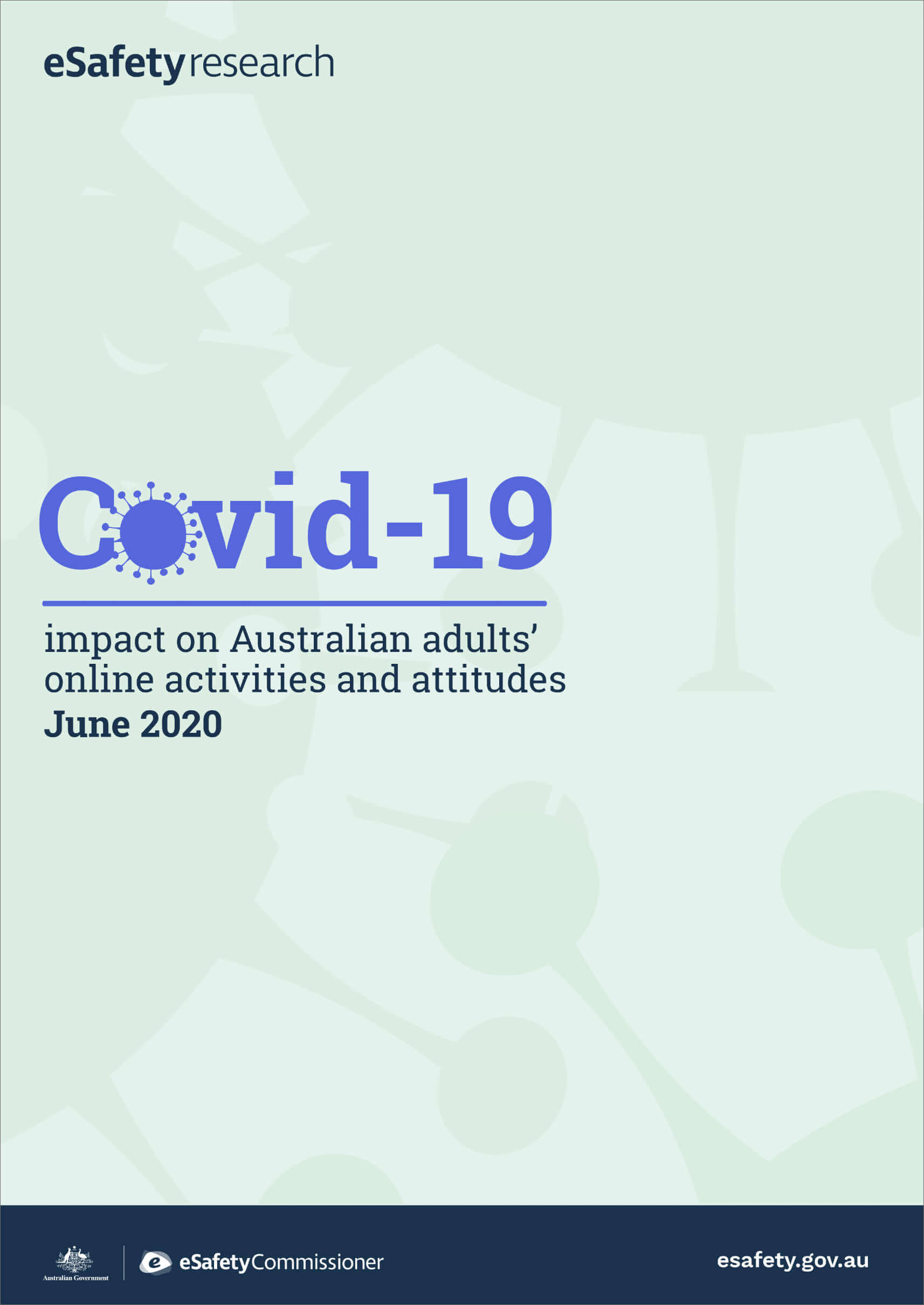COVID-19 impacts on Australian adults’ online activities and attitudes
For many Australians, social distancing and isolation during COVID-19 has triggered a dramatic lifestyle change with increased reliance on the internet for day-to-day activities such as working, communicating, entertainment and shopping. This research report provides a unique snapshot of how restrictions have impacted Australians’ online behaviours and attitudes, and highlights some of the challenges respondents have experienced.
For this research eSafety asked Australian adults a range of questions, posed in Omnipoll’s online omnibus survey. This ran from 21 to 25 May 2020 with a sample of 1,229 online.
Key findings
- The internet is seen as essential to undertaking many day-to-day activities including:
- work – 58%
- paying bills and banking – 56%
- communication and social interactions with family and friends – 43%
- accessing news and information – 43%
- entertainment – 35%
- One third of adults felt very confident that they have the skills, and access to information, to feel safe online – 56% felt somewhat confident and 8% did not feel confident at all. Males (38%) were more likely to feel confident than females (28%) and confidence decreased with age.
- Just over a third of adults had a negative online experience during COVID-19 including:
- receiving repeated unwanted messages or contact – 26%
- being sent unwanted inappropriate content e.g. pornography or violent content – 12%
- having things said to provoke an online argument – 8%.
- Adults with children at home were twice as likely to undertake an activity online 'a lot more' during this period than adults without children and were more likely to identify the internet as essential.
- Looking to the future, what people want from the internet includes information that is up-to-date, accurate and reliable (32%) and a reliable service (24%).
